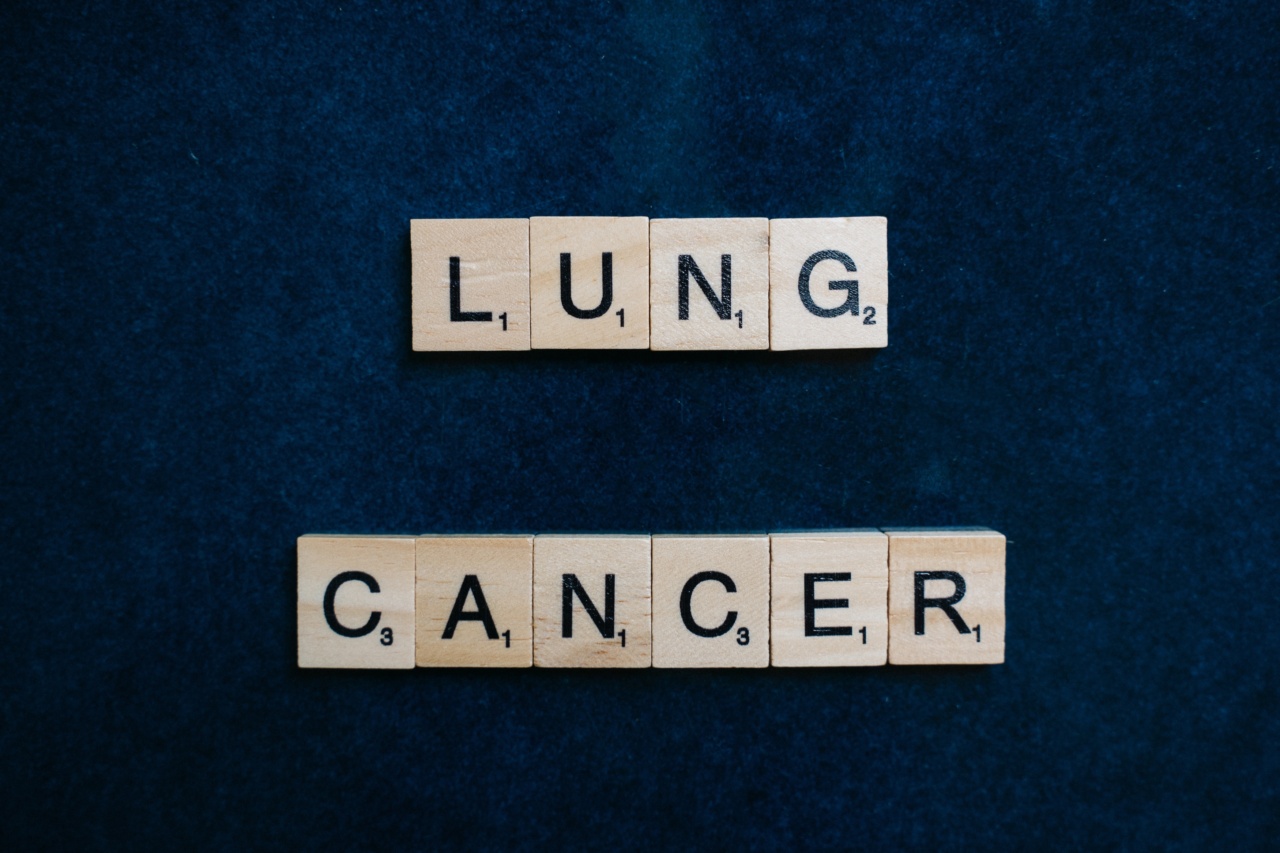Lung cancer is one of the most common and deadliest forms of cancer worldwide. Early detection is crucial for successful treatment and improved survival rates.
Recognizing the indicators and symptoms of lung cancer can help individuals seek medical attention at the earliest stages, when treatment options are most effective.
Types of Lung Cancer
There are two primary types of lung cancer: non-small cell lung cancer (NSCLC) and small cell lung cancer (SCLC). NSCLC is the most common type, accounting for approximately 85% of all cases. SCLC is less common but often spreads more rapidly.
Both types have distinct indicators and symptoms.
Indicators and Symptoms
Recognizing the indicators and symptoms of lung cancer can aid in early detection and timely medical intervention.
It is important to note that not all individuals will experience the same symptoms, and some may not experience any symptoms at all until the cancer has progressed. However, the following indicators are commonly associated with lung cancer:.
1. Persistent Cough
A persistent cough that lasts for several weeks or gradually worsens can be an early indication of lung cancer. Pay attention to the type of cough, such as a cough that brings up blood or rust-colored sputum.
2. Shortness of Breath
Unexplained shortness of breath or difficulty in breathing, particularly during physical activities, may be a sign of lung cancer. This symptom often develops as the tumor grows and obstructs the airways or affects lung function.
3. Chest Pain
Persistent chest pain that worsens with deep breathing, coughing, or laughing could be a symptom of lung cancer. The pain may also radiate towards the shoulder or down the arm.
4. Unexplained Weight Loss
Significant and unexplained weight loss without changes in diet or physical activity can be an indicator of various health conditions, including lung cancer. When cancer cells consume energy, it can lead to unintentional weight loss.
5. Fatigue and Weakness
Lung cancer can cause excessive fatigue, lack of energy, and overall weakness, even after sufficient rest or sleep. This symptom may result from the body’s immune response to cancer cells or cancer-related metabolic changes.
6. Hoarseness
A persistent hoarse or raspy voice that does not resolve within a few weeks can indicate underlying issues, including lung cancer. As the tumor affects the vocal cords or recurrent laryngeal nerve, changes in voice quality may occur.
7. Frequent Respiratory Infections
Recurrent respiratory infections, such as bronchitis or pneumonia, can be a sign of lung cancer. The presence of cancer cells in the lungs can weaken the immune system’s ability to fight off infections.
8. Wheezing
Wheezing or a whistling sound when breathing can occur due to the narrowing or blockage of the airways by lung cancer.
If wheezing persists or appears without a previous history of asthma or allergies, it should be evaluated by a healthcare professional.
9. Bone Pain
Lung cancer that has spread to the bones can cause bone pain, typically felt in the back, hips, or chest. This type of pain may be constant or intermittent and can become more severe over time.
10. Headaches and Neurological Symptoms
If lung cancer spreads to the brain, it can cause headaches, dizziness, seizures, or other neurological symptoms. These symptoms should not be ignored, particularly in individuals at risk for lung cancer.
Risk Factors for Lung Cancer
While anyone can develop lung cancer, certain factors increase the risk. Understanding these risk factors can help individuals be more vigilant and proactive in recognizing potential indicators:.
1. Smoking
Cigarette smoking is the leading cause of lung cancer, accounting for roughly 85% of cases. The longer and heavier the smoking habit, the greater the risk. Non-smokers exposed to secondhand smoke are also at an increased risk.
2. Radon Exposure
Exposure to high levels of radon, a naturally occurring radioactive gas, can significantly increase the risk of lung cancer. Radon can accumulate indoors, particularly in poorly ventilated spaces like basements and crawl spaces.
3. Occupational Hazards
Certain occupations, such as construction, mining, and manufacturing, may expose individuals to carcinogens like asbestos, arsenic, diesel exhaust, and certain chemicals.
Prolonged exposure to these substances increases the risk of developing lung cancer.
4. Family History
Lung cancer can occasionally have a genetic component, with a family history of lung cancer increasing the risk. Inherited gene mutations, such as those associated with the BRCA genes, can contribute to the development of lung cancer.
5. Age and Gender
The risk of developing lung cancer increases with age, and it is more common in older adults. Men are more susceptible to lung cancer than women, but the gap is closing due to increased smoking rates among women.
Importance of Early Detection
Early detection of lung cancer significantly improves treatment outcomes and can lead to a better chance of survival.
It is essential to consult a healthcare professional for diagnostic tests if any of the aforementioned indicators are experienced or if there is an increased risk due to certain factors.
Diagnostic procedures for lung cancer may include imaging tests, such as chest X-rays, computed tomography (CT) scans, or positron emission tomography (PET) scans.
Biopsies, which involve sampling and analyzing lung tissue, may be performed to confirm the presence of cancer cells.
By recognizing the indicators and seeking medical attention promptly, individuals can improve their prognosis and explore suitable treatment options, including surgery, radiation therapy, chemotherapy, targeted therapy, or immunotherapy.
Regular check-ups, particularly for individuals at a higher risk of lung cancer, are critical to ensuring early detection and timely intervention.
Avoiding exposure to tobacco smoke and other known carcinogens can also significantly reduce the risk of developing lung cancer.
Remember, knowledge is power when it comes to recognizing lung cancer indicators. Stay informed, prioritize your health, and don’t hesitate to seek medical advice if any potential symptoms or risk factors are concerning you.



























